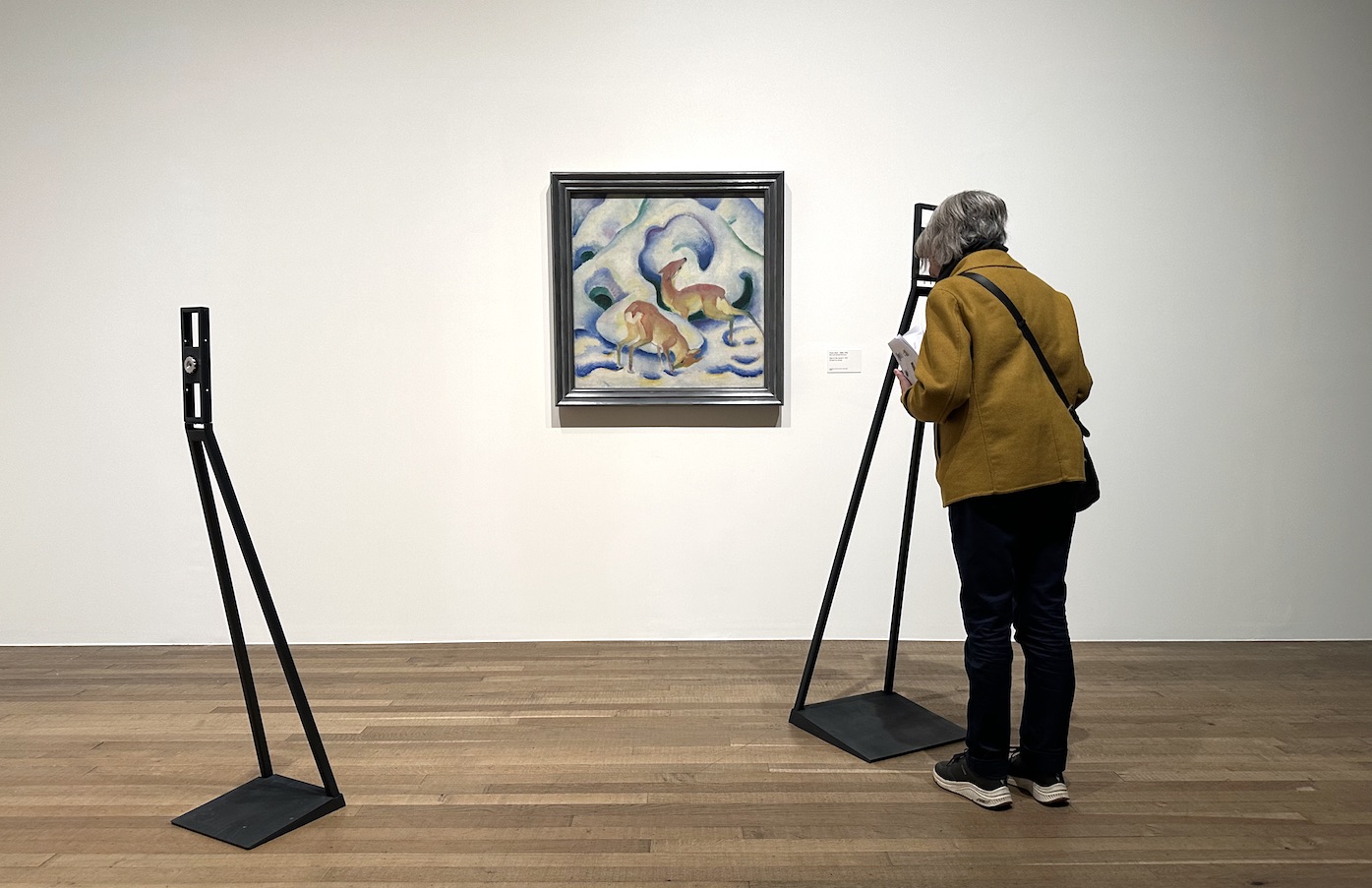A groundbreaking exhibition at Tate Modern reveals a vibrant array of early 20th-century artistic innovation. “Expressionists: Kandinsky, Münter and the Blue Rider” illuminates the group’s radical experimentation with form, colour, sound, and performance by an international circle of friends.
Drawing upon the unparalleled collection of expressionist masterpieces at the Lenbachhaus in Munich, alongside rare loans from public and private collections, the exhibition unveils a narrative of multicultural and transnational significance in early modernist art.
The Blue Rider (Der Blaue Reiter) is at the heart of the exhibition, a diverse collective of artists bound by a shared quest to articulate personal experiences and spiritual ideals. Edited by Kandinsky and Marc, their groundbreaking Almanac of 1912 and public exhibitions in 1911 and 1912 heralded a new era in artistic expression. Tate Modern’s exhibition charts the origins of this movement, from the creative nexus of pre-First World War Munich to the tranquil haven of rural Murnau, where Münter and Kandinsky found inspiration in the Alpine landscape.
The exhibition invites visitors on a sensory journey through Modernism’s fascination with sound, colour, and light. Iconic works such as Kandinsky’s “Impression III (Concert)” and Marc’s “Deer in the Snow II” offer immersive environments, unlocking the mysteries of synaesthesia and colour theory.
At the heart of our exhibition, the enduring legacy of the Blue Rider artists reverberates. The exhibition’s conclusion showcases their impact on the art world. Manifestos, editorials, exhibitions, and international collaborations ensured their place in the pantheon of art history, even as the outbreak of World War I dispersed the collective. Yet, their vision of a transnational creative community resonates powerfully today, a testament to their enduring influence.
“Expressionists” is presented in collaboration with Lenbachhaus Munich and is supported by the Huo Family Foundation, alongside Tate Patrons and Members. The exhibition is curated by Natalia Sidlina and Genevieve Barton of Tate Modern and promises to captivate audiences by celebrating artistic innovation and cross-cultural exchange.
The Blue Rider (Der Blaue Reiter) movement emerged in the early 20th century as a pivotal force in the evolution of modern art. Founded by a group of visionary artists in Munich, Germany, the movement was characterised by its radical departure from traditional artistic conventions and its embrace of innovative forms of expression.
At its core were two influential figures: Wassily Kandinsky and Franz Marc. Together, they sought to create a new visual language that transcended the boundaries of representation and tapped into the spiritual dimensions of artistic creation. The name “Der Blaue Reiter” was inspired by a shared fascination with the colour blue and a belief in the transformative power of art to transport viewers to higher realms of consciousness.
The Blue Rider artists were united by a common desire to explore the human psyche’s inner workings and convey emotions and experiences through abstract forms and vibrant colours. They rejected the constraints of academic art and instead championed spontaneity, intuition, and individual expression.
The movement’s manifesto, published in the Blue Rider Almanac of 1912, articulated its guiding principles and celebrated the unity of art, music, and spirituality. Through exhibitions, publications, and collaborations, the Blue Rider artists sought to challenge the status quo and inspire a new generation of creatives to push the boundaries of artistic possibility.
Although the movement was relatively short-lived, lasting from roughly 1911 to 1914, its impact was profound and far-reaching. The Blue Rider artists paved the way for the development of abstract art and laid the foundation for the modernist movement that would define the 20th century. Today, their legacy lives on in contemporary art’s vibrant and diverse landscape, serving as a testament to the enduring power of creativity and imagination.

